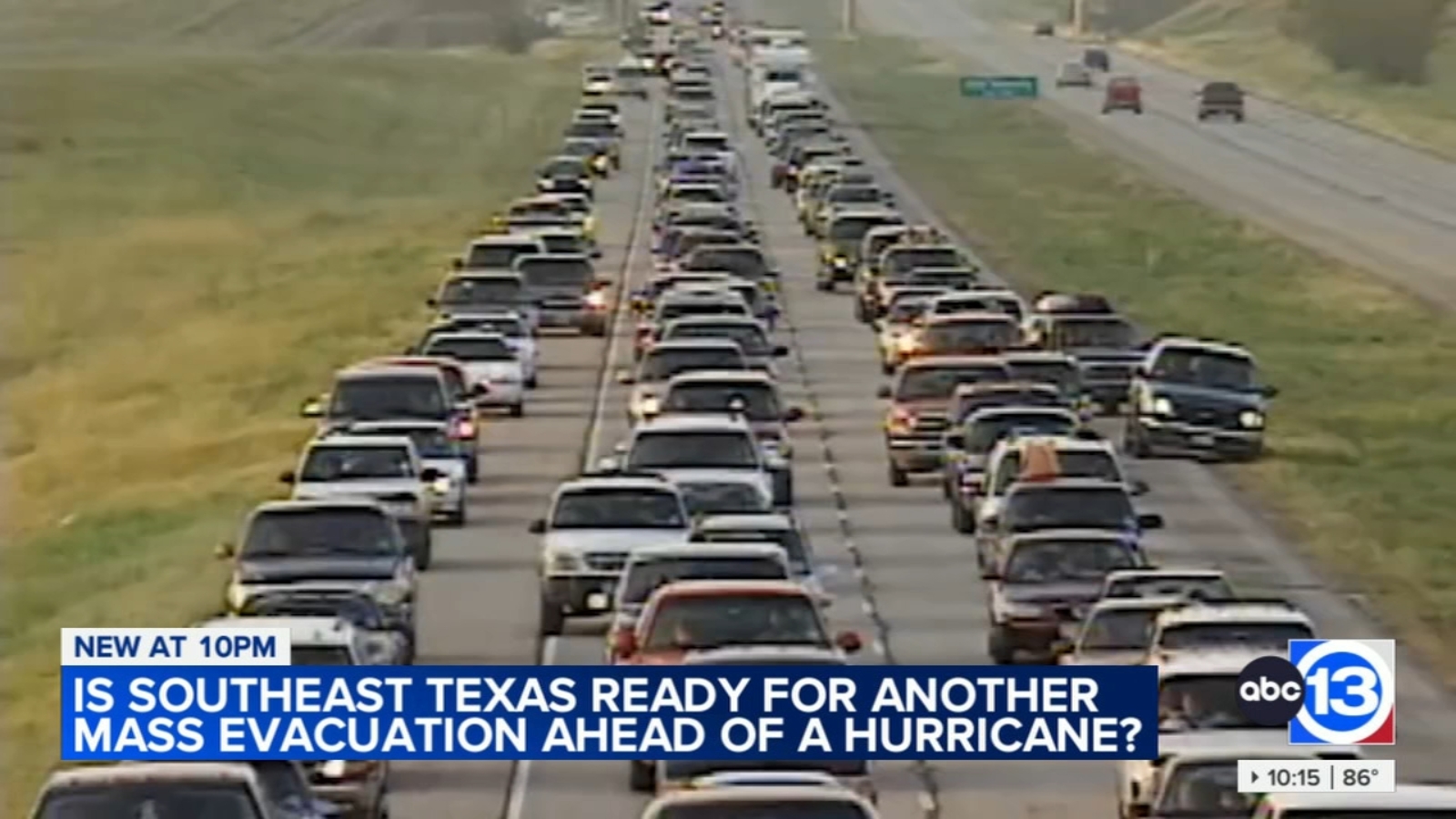GALVESTON, Texas (KTRK) — On a sunny day in Galveston, no one thinks about evacuating for the next storm. For longtime residents like Kerry O’Malley, leaving during a storm is rare.
“The first time we ever decided to evacuate was Rita. And that was because after Katrina had just hit and there was so much devastation, we were worried,” O’Malley said.
The evacuation before Hurricane Rita in September 2005 was one of the largest in U.S. history. An estimated 2.5 million people left home, and O’Malley remembers it.
“Seventeen hours later, we finally made it to Austin. And it was, it was scary,” O’Malley said.
Harris County Homeland Security and Emergency Management coordinator Mark Sloan remembers watching the evacuation unfold.
“What was the most alarming is to be able to see the traffic cameras and the number of people on the roads,” Sloan said. “There has been numerous lessons learned from the evacuation of Hurricane Rita.”
The lessons learned led to a color-coded evacuation map with four zones: Coastal, Zone A, B, and C.
Evacuations are based on forecast storm surges, which are hurricanes pushing water inland. The evacuation routes are those supported by law enforcement, fuel supply, and even contraflow.
Calling for evacuations by zone and zip code allows those in the greatest danger to leave first, usually people closest to the coast.
O’Malley believes this is one of the most essential parts of an evacuation.
“If it’s a big storm, we’ve got to get out of here. And other people, I think, are capable of sheltering in place to let the people that are along the coast, not just Galveston, but Bolivar, Corpus. Wherever it is, the coastal areas need a cleaner evacuation so everybody can stay safe,” O’Malley said.
In recent years, a new challenge has emerged – massive power outages.
“Based on recent events, people may not want to be without power for a week or a month after a major storm,” O’Malley said.
Sloan said inland residents without power could evacuate after the storm, but in Galveston, officials don’t want people to wait.
Galveston Mayor Craig Brown wants people to understand the danger of storm surges.
“It’s hard sometimes to say, ‘I will stay and then see what the situation is,’ because a lot of times, you get trapped on the island, then you can’t get off,” Brown said.
Galveston Emergency Management coordinator Byron Frankland highly recommends signing up for the STEAR program if you believe you’ll have trouble evacuating on your own.
The State of Texas Emergency Assistance Registry tracks those needing help in an emergency, such as the elderly and medically fragile.
And for everyone leaving from the coast or another zone, be ready with all your hurricane supplies.
“You should already have a kit that’s already prepared with at least — enough food, water, and medications for every member that’s traveling for at least a week,” Frankland said.
For news updates, follow Elissa Rivas on Facebook, X and Instagram.
Copyright © 2024 KTRK-TV. All Rights Reserved.
